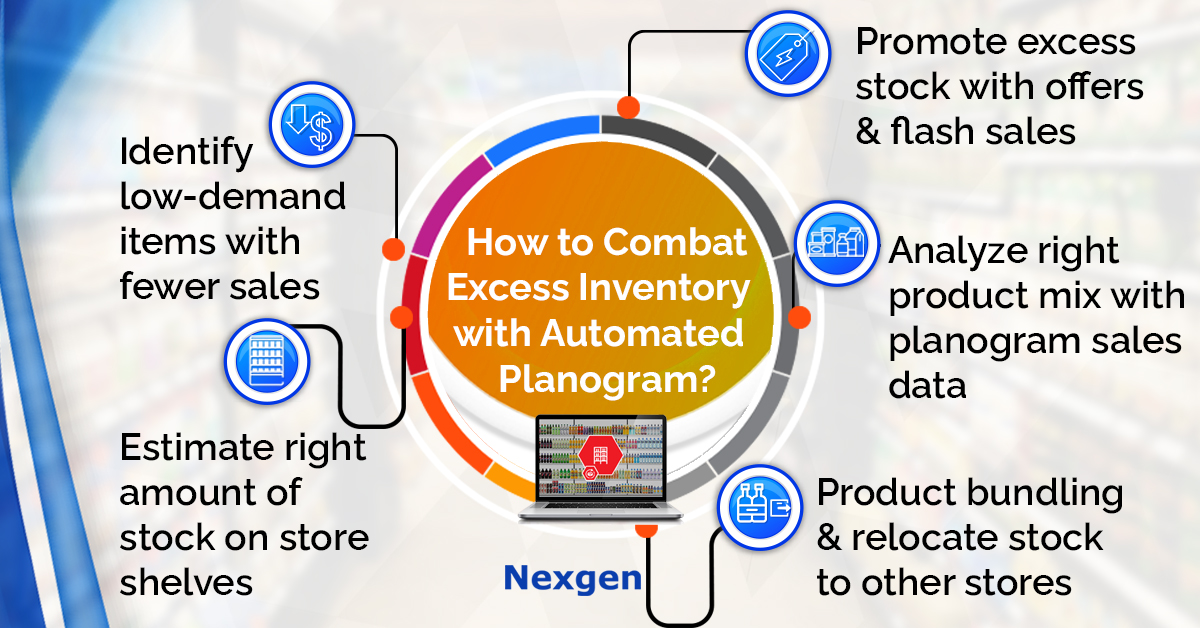One of the most challenging duties of retail stores is effectively managing inventory. The cost of carrying excess inventory can be huge, potentially costing retailers millions of dollars each year. As for retailers, he will need enough inventory to fulfill his orders, but everything he cannot sell easily.
What is Excess Inventory?
Excess inventory refers to the products that have exceeded the projected time period for sale. It has not become dead stock yet, but it is slow-moving from the retail shelves. It happens when the amount of product exceeds market demand. In such situations, retailers will be left with excess stock and forced to pay additional charges for keeping it somewhere. This prevents him from replacing the excess inventory with new stock.
Why Do You Have Excess Inventory?
Sometimes, products remain on the shelf or in the warehouse for long enough, and retailers find it difficult to sell them out. To avoid this, a retailer should understand the reasons for excess inventory and should take remedial actions to resolve it. So, the following are some of the most common reasons, both within and beyond a retailer’s control:
- Failing to forecast expected demand and sales: Sometimes, overestimating the market’s demand can cause excess inventory in your store. There is a huge chance that customers will shift their needs and taste when there is a new market trend happening. Therefore, retailers need to consider retail data and reports continuously.
- Poor inventory management system: When retailers order too many products, it becomes difficult to sell. Similarly, poor shelving and floor planning, imperfect shelf management and category management are all part of a poor inventory management system.
- Economic and weather changes: When there are some uncontrolled events like a pandemic or financial crisis, people's needs, living conditions and demands changes. Also can result in a decrease in demand for certain goods, which become excess stock.
How to Combat Excess Inventory with Planograms?
For a retail store, there are many ways to experience excess inventory. When that happens, it is important to find a way to resolve or reduce it from becoming dead stock. To avoid this, a planogram software would help figure out excess inventory causes, including low-demand items with fewer sales. It can help retailers in proper assortment planning by ordering and purchasing the products and estimating the right amount of stock for their retail shelves. So, the following are some planogram solutions to reduce excess inventory:

- Use promotions to sell off excess stock: When a customer walk by a store with a sign in the window displays that says “75% off,” it entices customers to go to the store. That is why the first action to take to promote excess stock is by offers, clearance, seasonal, and flash sales. Discount or offer labels can be placed on shelves with the help of a planogram to increase sales. This will highlight the strategic shelf areas of your store and lead shoppers to add products to their baskets. Also, it can create an urgency in the customer’s minds and encourages them to buy the items to not lose out on a good deal.
- Give products extra exposure: Surfacing the same product in multiple store places is a great way to turn a shopper’s head. Using past sales reports, retailers can understand which products have high exposure and which are slow-moving products. With that understanding, retailers can place products on store shelves with an effective category management system.
- Product bundling: A retailer can group certain products with other complementary items and sell them by offering a lower price than if purchased separately. For example, skin care products can be bundled together other than separately purchased. This saves the money of customers and retailers can sell excess inventory without taking a hit on the profits.
- Proper category management: By analyzing the right product mix with the planogram sales data, a retailer can identify the top-selling products and mark out slow-moving products that will result in excess inventory. It ensures that your store shelves are well organized and not overcrowded.
- Relocate stock to other stores: If the retailer has over-ordered items, he can distribute them to other outlets where the product will be more inclined to sell. It will depend on customer buying trends, market demand and living conditions. This will help to build stronger market demand and a good understanding of which products sell well in which regions with the help of proper assortment planning and can place products on retail shelves effectively.
Overview of Nexgen POG
Nexgen POG is a cloud-based powerful planogram software for visual merchandising. It provides the retailer with a detailed assortment optimized planogram for better shelf planning and proper inventory management. It comes with an array of features, including customizable templates, bulk upload images, easy compliance, report generation and much more. Its interface is extremely user-friendly, and planograms can be designed by easily dragging and dropping the products. Nexgen POG is a cost-efficient planogramming tool, designed for creating store-specific planograms.
Get Your Free Trial Now!